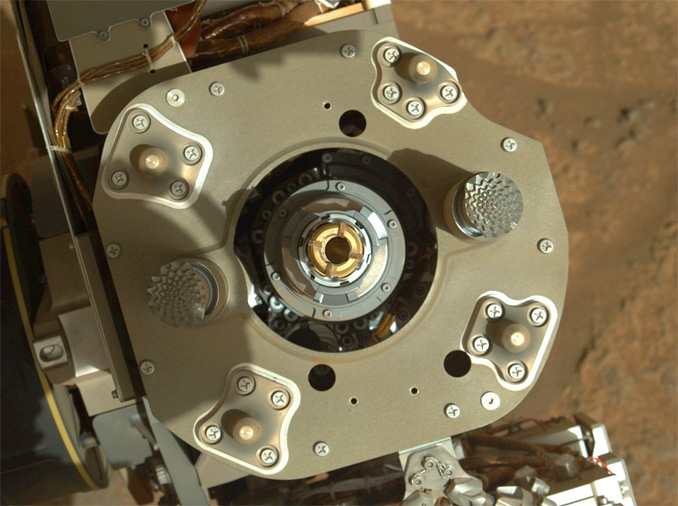
The Perseverance Mars rover’s initial attempt to collect its first sample from the floor of Jezero Crater failed to capture any martian rock, NASA says, possibly due to the nature of the targeted formation. Engineers at the agency’s Jet Propulsion Laboratory are reviewing telemetry and photos from the rover to figure out why the attempt was “not the ‘hole-in-one’ we hoped for,” said NASA science chief Thomas Zurbuchen.
“There is always risk with breaking new ground,” he said in a NASA news release. “I’m confident we have the right team working this, and we will persevere toward a solution to ensure future success.”
One of the primary goals of the Perseverance mission is to collect rock and soil samples, seal them in titanium tubes and place them on the surface for retrieval by another lander later this decade. The recovered samples then will be carried back to Earth aboard yet another spacecraft for detailed laboratory analysis.
During its first collection attempt on 6 August, Perseverance’s Sample and Caching System used a percussive drill on the end of its 2-metre long (7-foot-long) robot arm to bore into a targeted rock. Telemetry shows the drill and bit were used as planned and a sample tube was processed. But no rock was detected.

“The sampling process is autonomous from beginning to end,” said Jessica Samuels, the surface mission manager for Perseverance. “One of the steps that occurs after placing a probe into the collection tube is to measure the volume of the sample. The probe did not encounter the expected resistance that would be there if a sample were inside the tube.”
Engineers plan to use a camera on the end of the rover’s robot arm to capture close-up images of the bore hole to get a better idea of what might have happened.
“The initial thinking is that the empty tube is more likely a result of the rock target not reacting the way we expected during coring, and less likely a hardware issue with the Sampling and Caching System,” said Jennifer Trosper, project manager for Perseverance at JPL.
“Over the next few days, the team will be spending more time analysing the data we have, and also acquiring some additional diagnostic data to support understanding the root cause for the empty tube.”



